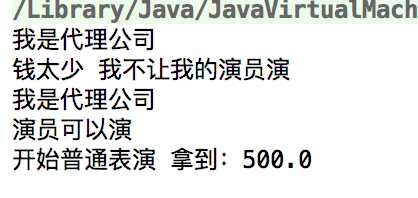标签:col inno cts public his imp catch 情况下 err
通过反射加载类的构造器并新建对象
package ref; import java.lang.reflect.InvocationTargetException; public class ReflectServiceImpl { private String name; public void sayHello(){ System.out.println("hello "+name); } public ReflectServiceImpl(String name) { this.name = name; } public static void main(String[] args) { ReflectServiceImpl object = null; try { object = (ReflectServiceImpl) Class.forName("ref.ReflectServiceImpl").getConstructor(String.class).newInstance("aa"); } catch (InstantiationException e) { e.printStackTrace(); } catch (IllegalAccessException e) { e.printStackTrace(); } catch (ClassNotFoundException e) { e.printStackTrace(); } catch (NoSuchMethodException e) { e.printStackTrace(); } catch (InvocationTargetException e) { e.printStackTrace(); } System.out.println(object.getClass().getName()); object.sayHello(); } }
通过反射执行方法,这种执行是在先使用new关键字创建了对象的情况下,也可以使用反射创建对象然后反射执行方法
ReflectServiceImpl target = new ReflectServiceImpl(); Method method = ReflectServiceImpl.class.getMethod("sayHello", String.class); method.invoke(target,"张三");
其实就是把上面的两种结合起来
ReflectServiceImpl target = (ReflectServiceImpl)Class.forName("ref.ReflectServiceImpl").newInstance();
Method method = ReflectServiceImpl.class.getMethod("sayHello", String.class);
method.invoke(target,"张三");
所谓代理模式就是在不改变方法源码的情况下对原方法进行增强,允许用户在运行期间创建基于接口的代理去增强接口代码。该技术涉及到反射中的两个类:Proxy InvocationHandler。实现invocationHandler接口的类负责把接口的逻辑和要增强的逻辑组装起来,Proxy通过新建代理对象的方式来执行InvocationHandler的组合逻辑。
实现动态代理首先要有一个接口,以及该接口的一个实现类作为被代理的对象。
package daili; public class Actor_01 implements Actor { @Override public void act(float money) { System.out.println("开始普通表演 拿到:"+money); } @Override public void dangerAct(float money) { System.out.println("开始危险表演 拿到:"+money); } }
package daili; public interface Actor { void act(float money); void dangerAct(float money); }
然后实现InvocationHandler接口的类作为代理对象,代理对象调用被代理的对象的相关方法,以及织入横切逻辑。所以代理对象里一定要有被代理对象的引用,实现这种引用既可以通过属性的方式来实现,也可以用个匿名内部类调用外部类属性来实现,但是后者要求该属性必须是final,这或多或少有一点侵入的意思,所以这里采用了直接实现InnovationHandler方式。
invoke方法中,调用method.invoke是执行被代理的对象的方法,而在method.invoke前后就是可以随意织入的方法。
public class ActorHandler implements InvocationHandler { private Actor actor; public void setActor(Actor actor) { this.actor = actor; } public ActorHandler(Actor actor) { this.actor = actor; } @Override public Object invoke(Object proxy, Method method, Object[] args) throws Throwable { System.out.println("我是代理公司"); float money= (float)args[0]; Object result = null; if (money>100){ System.out.println("演员可以演"); result = method.invoke(actor, args); }else { System.out.println("钱太少 我不让我的演员演"); } return result; } }
最后一步是调用Proxy的static方法newProxyInstance来调用增强后的方法。
public class Client { public static void main(String[] args) { Actor_01 actor_01 = new Actor_01(); Actor proxyInstance = (Actor)Proxy.newProxyInstance(actor_01.getClass().getClassLoader(), actor_01.getClass().getInterfaces(), new ActorHandler(actor_01)); proxyInstance.act(100f); proxyInstance.act(500f); } }

标签:col inno cts public his imp catch 情况下 err
原文地址:https://www.cnblogs.com/AshOfTime/p/10600646.html